The dirt on climate change: Regenerative agriculture and health care
Solutions beneath our feet and on our plate
A Health Care Without Harm position statement
Top takeaways for health care
- Regenerative agriculture is a system of agricultural practices and principles that support biodiversity, enrich soils, improve watersheds, and increase the capacity of the soil to capture carbon, contributing to the reversal of global warming.
- Farmers who incorporate regenerative practices and principles into the management of their land can improve their livelihoods through reduced input costs, improved profitability and increased income, while reducing their exposure to harmful agricultural chemicals.
- Regenerative agriculture can help ensure a climate-resilient and food-secure future.
- There is a ripe opportunity for health care to lend its respected voice and purchasing power to support the growth of regenerative agriculture systems, creating a food system that has profound benefits for both human and environmental health.
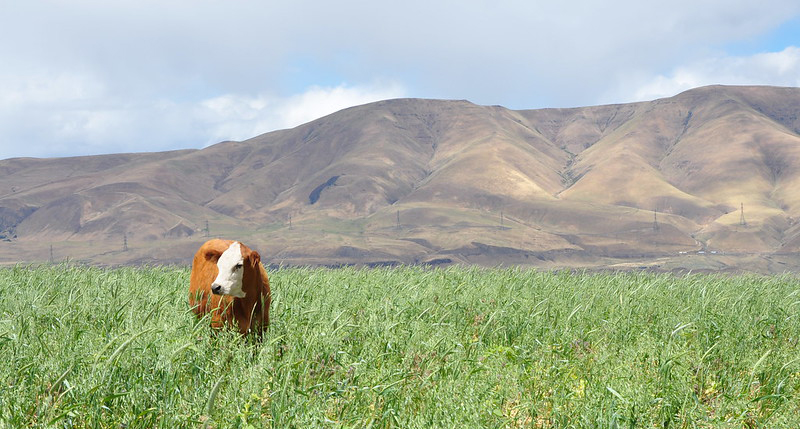 Farmer Noah Williams' cover crops in Oregon (USDA Natural Resources Conservation Service/Flickr)
Farmer Noah Williams' cover crops in Oregon (USDA Natural Resources Conservation Service/Flickr)
Believe it or not, a solution to climate change may lie beneath our feet. The buzz around regenerative agriculture is growing – not only as a climate solution but also as a tool for drought protection, a way to improve farmer incomes, and to ensure our food security into the future.
Health care institutions are actively working to reduce their greenhouse gas (GHG) emissions, but how can we sequester the carbon that is already in the atmosphere in order to prevent catastrophic climate change, while also ensuring our farming systems can withstand the impacts that cannot be avoided? The soil may be an answer and there are ways that the health care sector can act to promote “carbon farming” in order to ensure the health of our communities for generations to come.
Many are familiar with the idea of planting trees or preserving forests to combat climate change for their role in “breathing” carbon dioxide, one of the primary gases that is responsible for climate change. Regenerative agriculture works on the same principle, ensuring that our vast agricultural lands work to inhale carbon and store it in soils where it belongs. Currently, food production accounts for nearly a quarter of global GHG emissions due, in part, to practices that inhibit the ability of soils to store carbon. Regenerative agricultural practices can reverse these effects and turn agricultural lands into a carbon sink.
Health care is at the front line of climate change, bearing the costs of increased diseases and exacerbated health disparities caused, in part, by more extreme weather patterns. The sector has a vested interest in fighting climate change, and the power to accelerate regenerative practices through its purchases, investments, and influence.
What is regenerative agriculture?
Regenerative agriculture acknowledges the role of soil in keeping the earth’s carbon system in balance. It is based on heritage farming methods (also called agroecology methods) practiced by indigenous peoples all over the globe who value biodiversity and soil health. Western scientists and major food companies have a new understanding of the potential of regenerative farming practices to restore soil health, improve watersheds, and increase the capacity of the soil to capture carbon, contributing to the reversal of global warming. Due to farming practices such as tillage and monocropping, we currently have too little carbon in our soils and too much in the atmosphere. Regenerative agriculture can help restore the balance.
Regenerative agriculture takes us back to elementary science class with the concept of photosynthesis. Plants intake carbon from the atmosphere, convert it into sugars, and then pump some of the sugars through their roots to feed microorganisms that use the carbon to build soil. Similar to the human gut, healthy soil is marked by a thriving microbiome – communities of bacteria, fungi and other microbes that give soil structure and make nutrients available to plants by breaking them down. The result of this process is soil that grows healthier, pest-resistant plants, has greater water-holding capacity and drought tolerance, and stores carbon deep in the ground.
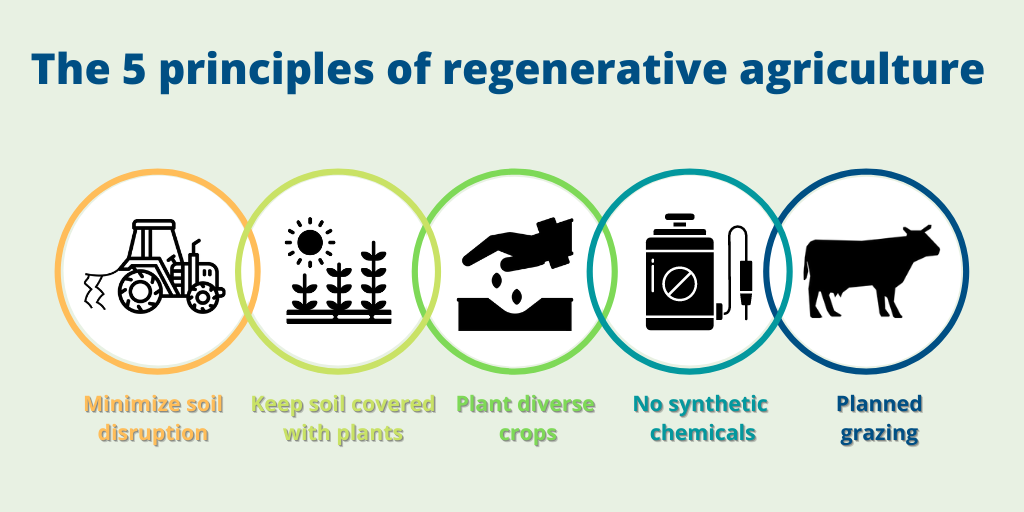
Regenerative agriculture is a method of fostering, and not inhibiting, these ecosystem processes. The crux of the methodology is minimal soil disturbance and keeping the soil covered with a diversity of plants so that roots can continue to build soil and sequester carbon. Mainstream, agricultural practices including tillage, monocropping, fallow land, and chemical pesticide and fertilizer use inhibit these processes, and as a result, we are rapidly losing soil carbon to the atmosphere and jeopardizing our ability to produce food into the future. Some examples of agricultural practices that apply regenerative agriculture principles include:
- No till or low till - Minimizing disruption to the soil ecosystem keeps plant roots connected to unique communities of microorganisms that are key in the processes to build healthy soil and store carbon.
- Cover crops - Keeping the ground covered with plants has many benefits: It allows for water and carbon to be absorbed by the soil which keeps the soil alive, helps eliminate soil erosion by preventing the soil from blowing or washing away, and prevents desertification.
- Diversified production systems - Multiple crops rotated in fields, perhaps with integration of livestock, mimics natural ecosystems and enhances biodiversity which contributes to healthy soil.
- Reduction or elimination of synthetic chemicals - Utilizing synthetic chemical fertilizers discourages the plant to seek nutrients deeper in the soil and work with microbes for its nutrition, which results in less carbon sequestration. Utilizing chemical pesticides further disrupts the soil microbial community and has other negative impacts on biodiversity, and contributes to land and water pollution. And pesticide exposure through the food we eat, air we breath, and water we drink has been linked to health impacts that range from birth defects to cancers and neurological disorders.
- Planned grazing - Planned or rotational grazing of grasses mimics the patterns of animal herds which ensures land is not overgrazed, and manure fertilizes the soil and contributes to carbon sequestration. Animals in pastured systems tend to be healthier and not need antibiotics to treat disease.
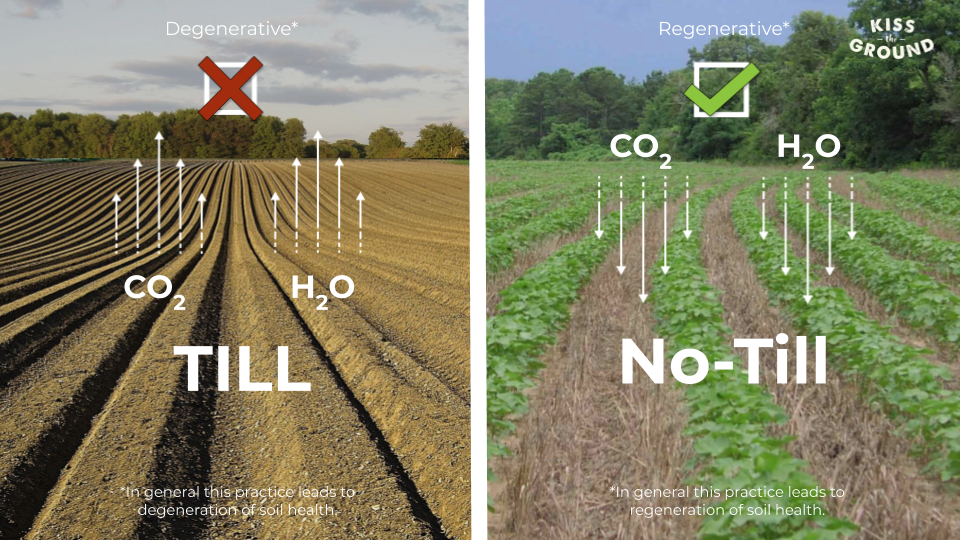
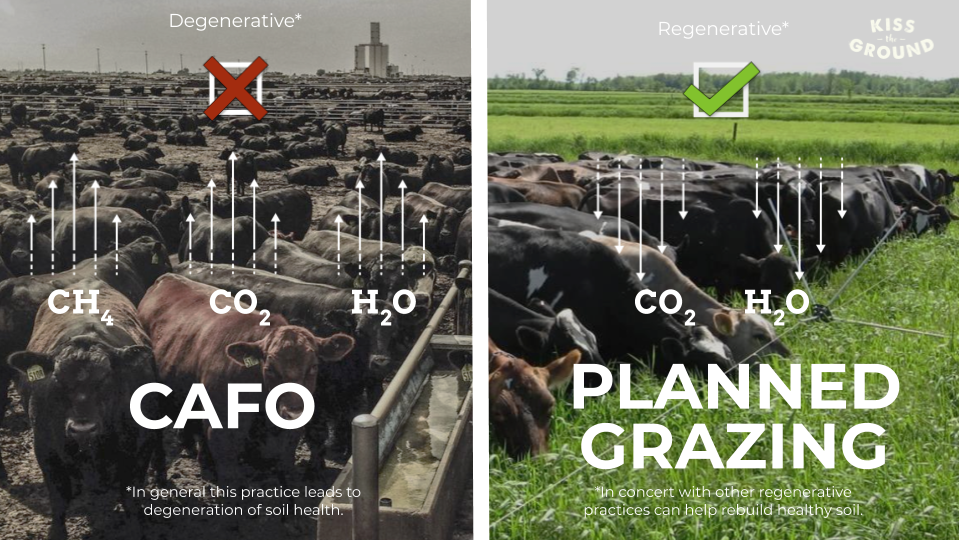
Comparing agricultural practices (Kiss the Ground)
Scientists agree that regenerative agriculture can be effective in sequestering carbon, however there is still uncertainty regarding the sequestration potential. The ability of agricultural lands to sequester carbon depends on multiple factors including the practices used and the topography of the land itself. Some entities regard regenerative agriculture as a key tool in the fight against climate change, while others posit that sequestration through agriculture has limited potential. With respect to climate change, regenerative agriculture should be considered to be one strategy in a suite of land-use strategies. However, the uncertainty of the sequestration potential does not diminish regenerative agriculture’s role in securing our ability to produce food into the future. Estimates from the United Nations show that one third of agricultural lands are degraded and that we are losing 24 billion tons of fertile soil per year.
Additional benefits of adopting regenerative agriculture practices include:
- Water and soil health - Healthy soil and healthy waterways are inextricably linked. Healthy soil is like a sponge, holding 20 times its weight in water, which decreases runoff and provides resistance to drought. Additionally, healthy soil reduces the need for pesticides and chemical fertilizers which contaminate our watersheds and endanger farm workers and farming communities.
- Increased farmer income - Healthy soil results in healthy, disease-resistant and pest-tolerant plants, decreasing the need for expensive fertilizers and pesticides. Farmers may also be able to sell regeneratively produced foods at a premium and get a financial return on the ecosystem services they provide.
- Secure food future - Ultimately, regenerative practices that build healthy soil, reduce our dependence on agricultural chemicals, create crop resilience against inclement weather, and bolster plant’s disease resistance which will be essential for sustaining high levels of food production and ensuring greater community food security into the future.
Regenerative agriculture and health care
Producing food through regenerative agricultural methods can be a systemic solution with benefits for human health, animal welfare, the environment, and farm profitability. Hospitals in the Practice Greenhealth and Health Care Without Harm network already champion components of a regenerative agricultural system by procuring grass-fed meat, sourcing from local, small- to mid-sized diversified farms, and prioritizing certifications like “organic” that reduce the use of toxic inputs.
Plant-Forward Future
Regenerative agriculture addresses climate change by sequestering carbon in the soil. The other side of the food-climate connection “coin” is reducing emissions from food purchasing through animal protein reduction. Using these dual strategies, health care can reduce its climate impact, while supporting practices to undo the damage already done (regenerative agriculture).
Health Care Without Harm and Practice Greenhealth work with health care institutions to adopt a plant-forward approach to food service. Plant-forward is a style of cooking and eating that emphasizes and celebrates, but is not limited to, plant-based foods. These include fruits and vegetables, whole grains, beans and other legumes, nuts and seeds, plant oils, and herbs and spices. This style of cooking reflects evidence-based principles of health and sustainability.
Plant-forward cooking may utilize animal proteins, but does so in a limited way. Health Care Without Harm and Practice Greenhealth encourage health care facilities to utilize cost savings from meat reduction to source regeneratively produced meat and dairy, or otherwise organic and sustainably produced animal products that can be a stepping stone to regenerative production.
 Health Care Without Harm and Practice Greenhealth have programs and resources to assist health care facilities in adopting plant-forward menus that can create savings for regeneratively produced animal proteins. The Cool Food Pledge is an opportunity for health care facilities to reduce their food-related greenhouse gas emissions and tie their health-promoting, plant-centered meal efforts to climate change.
Health Care Without Harm and Practice Greenhealth have programs and resources to assist health care facilities in adopting plant-forward menus that can create savings for regeneratively produced animal proteins. The Cool Food Pledge is an opportunity for health care facilities to reduce their food-related greenhouse gas emissions and tie their health-promoting, plant-centered meal efforts to climate change.
The future has never been more delicious
Ready for trendy, mouthwatering meals that are healthy for people and the planet? The Plant-Forward Future is here. The future never looked more delicious. Check out our resources for chefs and food service pros.
Our Redefining Protein report aims to guide the complex decision-making process encountered when applying an environmental nutrition approach to food purchases, specifically when reducing and replacing meat on the plate. Similarly, our better meat alternative position statement encourages whole food plant-based proteins rather than highly processed meat alternatives.
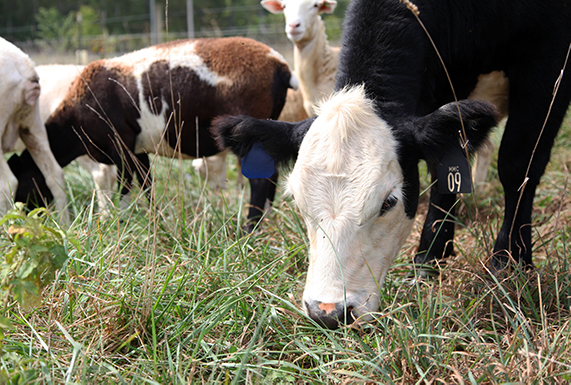
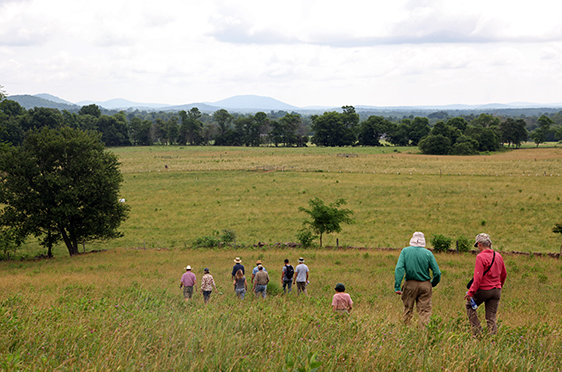 Mike Sands, like many Mid-Atlantic farmers, raises beef cows and lamb for meat on 110 acres of pasture utilizing
Mike Sands, like many Mid-Atlantic farmers, raises beef cows and lamb for meat on 110 acres of pasture utilizing
two techniques that improve the health of the land and livestock. (Marco Sánchez / Piedmont Environmental Council)
Creating community health, wealth, and resilience
Hospitals have the potential to improve public and environmental health and to strengthen the economic vitality of their communities. As anchor institutions, they are rooted in place, holding significant investments in real estate and social capital, are among the largest employers in their communities, and are often explicitly oriented toward supporting community health in alignment with their missions.
Anchor institutions can play a pivotal role by leveraging their purchasing power to invest in local production, shifting their procurement to support more regional producers that are implementing regenerative agricultural methods. The principles embedded in regenerative agriculture support farmworker and community health by reducing or removing harmful inputs like synthetic pesticides and antibiotics. Increased crop yield and disease and drought resistance further bolster community food security. By fostering greater resilience in our regional food systems through regenerative agriculture, our communities can be more food-secure in extreme weather events and other major disruptions in national supply chains.
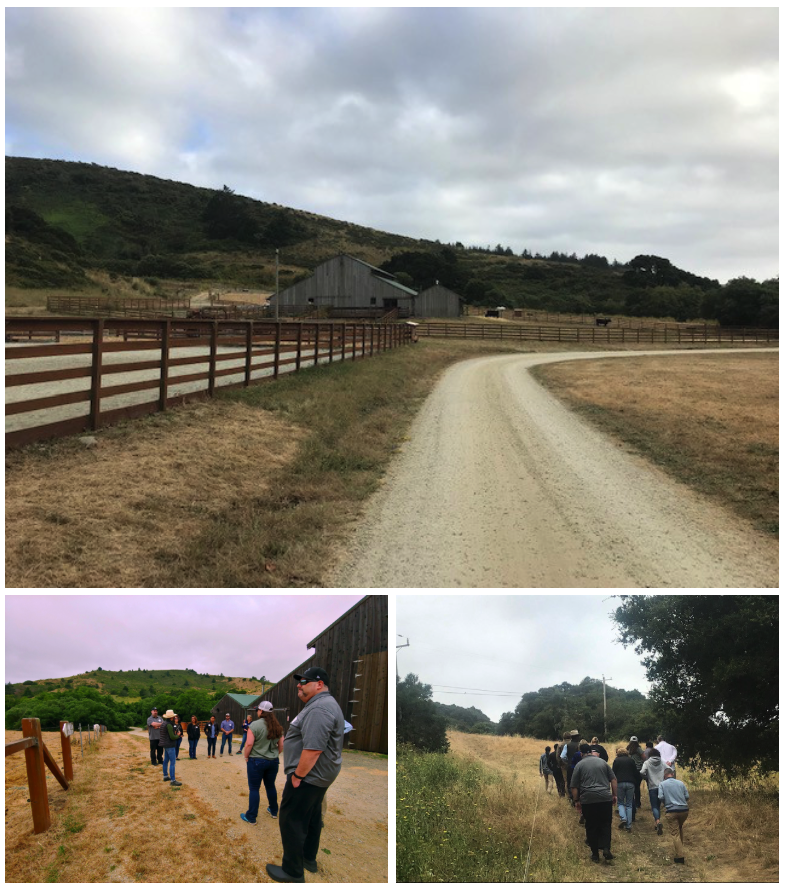
TomKat Ranch, a 1,800-acre grass-fed cattle ranch in the San Francisco Bay Area. TomKat is participating in a grass-fed
beef purchasing pilot along with K-12 school districts, hospitals, and other ranches. (Ben Thomas / Courtney Crenshaw)
Opportunities to support regenerative agriculture
Procurement
Health care institutions can support regenerative agriculture as part of their efforts to fight climate change and ensure a food-secure future. While the marketplace currently has very few products that are third-party certified as regeneratively produced, there are emerging labels that will help hospitals use their purchasing power to support these practices. Health Care Without Harm and Practice Greenhealth offer guidance for health care purchasers to identify labels and certifications that have meaning.
Another label?
Regenerative farming and its associated certifications represent an evolution of our understanding about how soil health is connected to climate and food security. Health Care Without Harm and Practice Greenhealth offer guidance for health care purchasers to identify labels and certifications that have meaning.
Learn more
At this time, your distributor may not yet carry any third-party certified regenerative products but requesting these products from vendors sends a signal that there is demand. Health Care Without Harm and Practice Greenhealth will continue to monitor the availability of certified regenerative products in the national supply chain and will update our guidance as products become more widely available.
Alternatively, health care entities can form purchasing relationships with producers in their communities that are using regenerative practices. Sourcing food regionally can allow you to “know your farmer” and to ask producers direct questions about their practices. If you choose to purchase regenerative products from a producer who has not been certified, it is important to verify their practices in order to assure that you are getting what you pay for.
Investment
As a society we need to propel the transition to regenerative agriculture and act with urgency in order to secure our food and climate futures. There are currently limited procurement opportunities for certified regeneratively produced products, however health care can help lead the transition by supporting regenerative agriculture practices through their investment portfolios. Nationally, health systems have an estimated $400 billion in investment assets. Project Drawdown estimates that to implement regenerative agriculture as a climate solution globally, it would take an investment of $77.9-115.82 billion.
If health care shifted just a small portion of their investment assets to regenerative agriculture, it could play a major role in supporting farmers to transition to regenerative practices. A 2019 report identified $47.5 billion of investments that included one or more criteria related to some facet of regenerative agriculture. While some investments have been made to date, much more is needed to build out more regenerative food systems. With the assets that hospitals and health systems manage, they can invest directly in solutions across agricultural value chains with positive impacts for both human and environmental health.
There are a number of examples where health care has successfully deployed investment assets to make change at the greater community and societal level. For example, Practice Greenhealth member Gundersen Health invested $10 million in renewable energy projects in its community and as a result, achieved energy independence while creating new jobs and supporting the local economy. As a founding member of the Cleveland Climate Action Fund, Practice Greenhealth member Cleveland Clinic has invested $170,000 in sustainability projects that meet neighborhood needs such as improved stormwater management, increased clean energy, local food production, and active transportation.
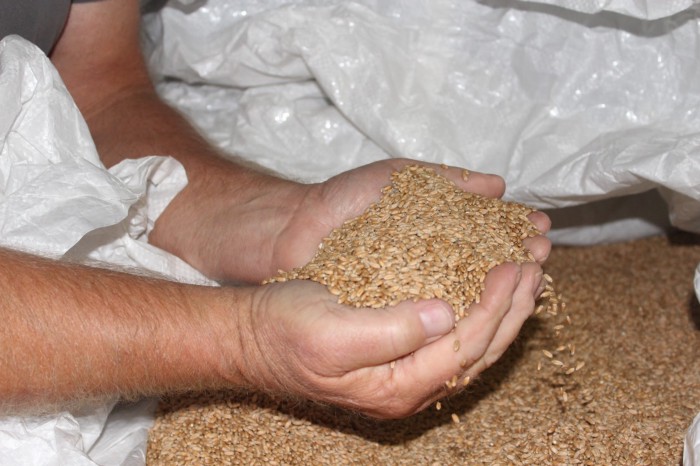
Organic wheat from Jaine's farm in Illinois ready for milling. Locally grown regenerative organic flaked oats
appear on the menu in Peoria’s OSF HealthCare Saint Francis Medical Center. (Golda Ewalt)
Carbon offsets
Farmers practicing regenerative practices and achieving measurable results in sequestering carbon are doing a service for society. There are growing efforts to monetize the soil carbon gains that farmers are achieving by selling them in carbon offset markets. For example, a farmer that sequesters a ton of carbon in their soil can work with a firm to translate the sequestration into a credit that can be sold.
A carbon offset is a project or activity that reduces emissions of greenhouse gases to compensate for emissions created elsewhere. Offsets are an imperfect tool to help organizations offset emissions that they cannot reduce through energy efficiency, renewable energy, or other mitigation efforts. Carbon offsets should not be viewed as a replacement for actions to reduce an organization’s footprint, but rather as a bridge to technology or competitive pricing that is not yet available. There is an inherent level of risk in selecting offset projects because there are past examples of projects that did not meet their promised reductions or had unintended impacts. Today most offsets bought and sold are certified by a third party ensuring the offset is providing the promised emission reduction benefit.
The offset market for carbon sequestration from agriculture is in its infancy and caution should be used in pursuing this strategy. However, it is a compelling opportunity that could advance regenerative agriculture, increase farmer income, and motivate other farmers to adopt regenerative practices.
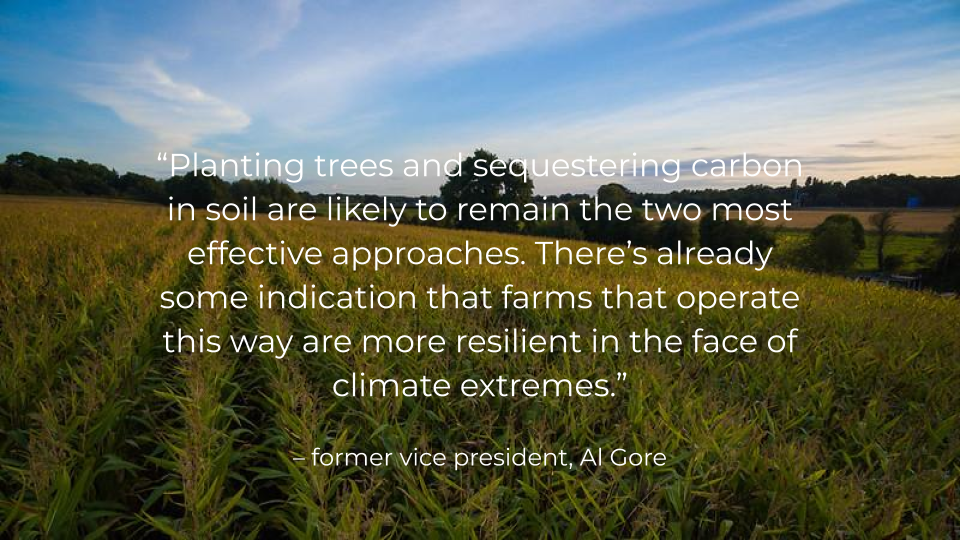 Farmland in Acton Trussell, England (William Hook/Flickr)
Farmland in Acton Trussell, England (William Hook/Flickr)
Policy
Health care systems and facilities can enact food purchasing policies that prioritize regeneratively produced foods. These internal policies can codify support for regenerative agriculture, while also serving as a tool to communicate with vendors about preferences. Internal policies may reference third-party regenerative agriculture certifications, agricultural practices such as no or low till or cover cropping, on-farm indicators such as soil carbon sequestration, or all of the above.
Agriculture policy is health policy. In their communities and society at large, health care can influence agricultural policy that supports farmers’ transition to regenerative agricultural practices. Health care professionals are considered by the general public to have the highest levels of ethics and honesty compared to any other profession. This level of trust makes health professionals ideal advocates for action on public policy to build healthy and regenerative food systems. Health care professionals can influence elected officials and support regenerative food policies through sign-on letters, providing testimonials, and participating in legislative visits.
